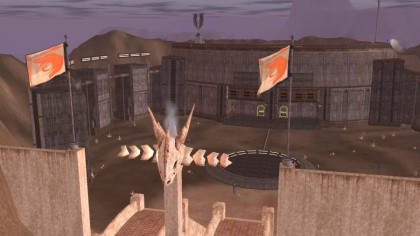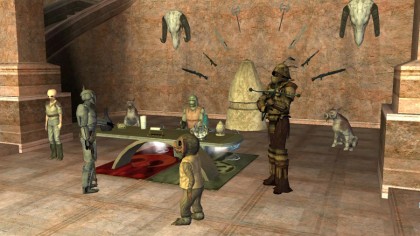How Star Wars: Galaxies could have changed the world
A hugely ambitious MMOG which was ultimately undone
SOE should have learned from this that balance was uniquely important to Galaxies. It did not. Under pressure from both players and LucasArts to give Jedi a more prominent place in the game, the studio began to take the lid off the game's elusive Force Sensitive system. The idea was, originally, quite a good one. The game was set at a time when the Jedi were dead or gone, but when new Force sensitives might nonetheless be born.

To simulate that, every character was assigned an invisible set of criteria involving multiple profession masteries that ultimately unlocked a Jedi character slot. Jedi would be powerful but hunted by the Empire, and if they died, they'd die forever. On paper, this was a challenging, exciting system, one designed to create extraordinary experiences both for the player that becomes a Jedi and the ones who witness or hunt them.
Almost no Jedi emerged from the system in the early months. To accelerate the process, SOE added a rare item to the game called a holocron, which, once used, would tell you a profession you needed to master to earn your Jedi. Master that profession and use another holocron and it'd tell you the next one, and so on.
The hologrind
The impact would subsequently be known as the 'hologrind', a social crisis of such scope the game never recovered. SOE had breached one of the core tenets of Star Wars Galaxies' original design by placing a singular goal on top of a system defined by lateral interdependencies. The result was chaos. The only items of any worth in the economy became gear for fast levelling and holocrons themselves.
Shops were abandoned as armoursmiths rerolled as dancers, dancers rerolled as biotechnicians, biotechnicians rerolled as smugglers. A small underground of hologrind objectors clung on, making money from the chaos in service economies and wondering when the game would become about something other than unlocking Jedi.
To curtail the hologrind, SOE introduced a new Force sensitivity system that hewed much closer to what other MMOGs were doing at the time. It was, functionally, an alternate advancement system based on building reputation with a particular faction, unlocked by following a linear questline. Force sensitivity became accessible to the point of being normal and expected. In fixing the hologrind, something integral about both the game's design and its fiction had been lost.
Space dogfights
A highlight of this time was the launch of Jump To Lightspeed, the game's first expansion. This introduced space travel – although atmospheric flight was not added until later – and surprisingly adept space combat. It was atmospheric and detailed, and were it not for the Jedi crisis, its release would have marked the game's peak. As it was, it was a welcome diversion after a long period of uncertainty, and proof some of the ambition of the original design remained.
Get daily insight, inspiration and deals in your inbox
Sign up for breaking news, reviews, opinion, top tech deals, and more.
Star Wars was changing, however, and so was the MMOG market. As the prequel trilogy progressed, LucasArts came to perceive the series in terms of iconic images and archetypal situations. Meanwhile, World Of Warcraft proved players wanted authored content from MMOGs. These two ideas would later find each other more naturally in Star Wars: The Old Republic. For Galaxies, they were a crippling imposition.
The first major shift was the Combat Upgrade, which simplified and rebalanced parts of the combat system. It was a success in several ways – space karate was no longer pre- eminent – but a shock to players. Then, months later, the Combat Upgrade itself was thrown out and replaced by New Game Enhancements.

Warcraft-isation
Galaxies' skill system was stripped out and replaced by World Of Warcraft-style classes, chosen during a tutorial mission where you met Han Solo. In a final, sad admission of the failure of the game's loftier ideas, Force Sensitive was placed next to Commando and Bounty Hunter on the class selection screen, complete with Luke Skywalker mugshot.
Star Wars Galaxies struggled on for another six years after the New Game Enhancements, but it was a different game. What had started as a vital but troubled MMOG of the older, more ambitious kind had become a plain and unsatisfying example of the new way.
A few things of value survived. Players could still decorate their houses, fly their ships, and visit increasingly empty cities. The spark was gone, however, because the interdependency that kindled it had been removed. When the plug was finally pulled in December 2011 it wasn't just new-Galaxies that died. The game that was died with it, too, as well as the game it might have been.